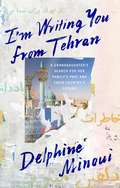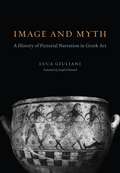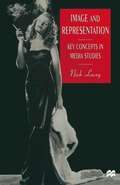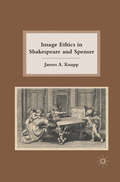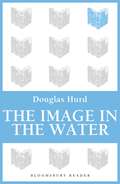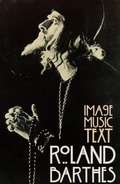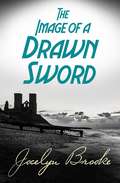- Table View
- List View
I'm Writing You From Tehran: A Granddaughter’s Search for Her Family’s Past and Their Country’s Future
by Delphine Minoui'Full of violence and passion' Elle Suffering the recent loss of her beloved grandfather and newly committed to a career in journalism, Delphine Minoui decided to visit Iran for the first time since the revolution – since she was four years old. It was 1998. She would stay for ten years.In the course of that decade, great change comes to both writer and country, often at the same time. Minoui settles into daily life – getting to know her devout grandmother for the first time, making friends with local women who help her escape secret dance parties when the morality police arrive, figuring out how to be a journalist in a country that is suspicious of the press and Westerners. Once she finally starts to learn Persian, she begins to see Iran through her grandfather’s eyes. And so it is all the more crushing when the political situation falters. She is caught up in protests and interrogated by secret police; some friends disappear and others may be tracking her movements. She finds love, loses her press credentials, marries, and is separated from her husband by erupting global conflict. Through it all, her love for this place and its people deepens and she discovers in her family’s past a mission that will shape her entire future.Framed as a letter to her grandfather and filled with disarming characters in momentous times, I’m Writing You from Tehran is an unforgettable, moving view into an often obscured part of our world.
I'm Your Man (Mills And Boon Desire Ser.)
by Susan CrosbyThere was a hot-looking man in her kitchen. And he was cooking! Maureen Hart had never had a summer so crazy…not even the year she'd become a teenage unwed mother. Now her life was on track with a steady boyfriend and a big promotion looming. And the one person who could derail everything was now waiting on her doorstep!
Im Zeichen des Unverfügbaren: Literarische Selbst- und Fremdbilder im 20. und 21. Jahrhundert (Lettre)
by Yvonne Dudzik Arne Klawitter Martin Fietze Hiroshi YamamotoFremdheitserfahrungen sind immer auch Selbsterfahrungen, die in der Literatur mit spezifischen Strategien der Inszenierung umgesetzt werden. Die Beiträger*innen fragen danach, inwieweit Texte und Autor*innen den Anspruch des Fremden zum Verstummen bringen oder für eine Form von Responsivität plädieren, in der die Präsenz eines unverstanden bleibenden Fremden zugelassen wird. Mit einem Fokus auf deutschsprachige Literatur des 20. und 21. Jahrhunderts analysieren sie die systematisch nicht einzuholende Kategorie des Unverfügbaren, die eine zentrale Rolle bei der Entwicklung von Fremd- und Selbstbildern spielt.
Image and Concept
by Olga FreidenbergFirst published in 1997. Routledge is an imprint of Taylor & Francis, an informa company.
Image and Concept
by Olga FreidenbergFirst published in 1997. Routledge is an imprint of Taylor & Francis, an informa company.
Image and Myth: A History of Pictorial Narration in Greek Art
by Luca GiulianiOn museum visits, we pass by beautiful, well-preserved vases from ancient Greece—but how often do we understand what the images on them depict? In Image and Myth, Luca Giuliani tells the stories behind the pictures, exploring how artists of antiquity had to determine which motifs or historical and mythic events to use to tell an underlying story while also keeping in mind the tastes and expectations of paying clients. Covering the range of Greek style and its growth between the early Archaic and Hellenistic periods, Giuliani describes the intellectual, social, and artistic contexts in which the images were created. He reveals that developments in Greek vase painting were driven as much by the times as they were by tradition—the better-known the story, the less leeway the artists had in interpreting it. As literary culture transformed from an oral tradition, in which stories were always in flux, to the stability of written texts, the images produced by artists eventually became nothing more than illustrations of canonical works. At once a work of cultural and art history, Image and Myth builds a new way of understanding the visual culture of ancient Greece.
Image and Myth: A History of Pictorial Narration in Greek Art
by Luca GiulianiOn museum visits, we pass by beautiful, well-preserved vases from ancient Greece—but how often do we understand what the images on them depict? In Image and Myth, Luca Giuliani tells the stories behind the pictures, exploring how artists of antiquity had to determine which motifs or historical and mythic events to use to tell an underlying story while also keeping in mind the tastes and expectations of paying clients. Covering the range of Greek style and its growth between the early Archaic and Hellenistic periods, Giuliani describes the intellectual, social, and artistic contexts in which the images were created. He reveals that developments in Greek vase painting were driven as much by the times as they were by tradition—the better-known the story, the less leeway the artists had in interpreting it. As literary culture transformed from an oral tradition, in which stories were always in flux, to the stability of written texts, the images produced by artists eventually became nothing more than illustrations of canonical works. At once a work of cultural and art history, Image and Myth builds a new way of understanding the visual culture of ancient Greece.
Image and Myth: A History of Pictorial Narration in Greek Art
by Luca GiulianiOn museum visits, we pass by beautiful, well-preserved vases from ancient Greece—but how often do we understand what the images on them depict? In Image and Myth, Luca Giuliani tells the stories behind the pictures, exploring how artists of antiquity had to determine which motifs or historical and mythic events to use to tell an underlying story while also keeping in mind the tastes and expectations of paying clients. Covering the range of Greek style and its growth between the early Archaic and Hellenistic periods, Giuliani describes the intellectual, social, and artistic contexts in which the images were created. He reveals that developments in Greek vase painting were driven as much by the times as they were by tradition—the better-known the story, the less leeway the artists had in interpreting it. As literary culture transformed from an oral tradition, in which stories were always in flux, to the stability of written texts, the images produced by artists eventually became nothing more than illustrations of canonical works. At once a work of cultural and art history, Image and Myth builds a new way of understanding the visual culture of ancient Greece.
Image and Myth: A History of Pictorial Narration in Greek Art
by Luca GiulianiOn museum visits, we pass by beautiful, well-preserved vases from ancient Greece—but how often do we understand what the images on them depict? In Image and Myth, Luca Giuliani tells the stories behind the pictures, exploring how artists of antiquity had to determine which motifs or historical and mythic events to use to tell an underlying story while also keeping in mind the tastes and expectations of paying clients. Covering the range of Greek style and its growth between the early Archaic and Hellenistic periods, Giuliani describes the intellectual, social, and artistic contexts in which the images were created. He reveals that developments in Greek vase painting were driven as much by the times as they were by tradition—the better-known the story, the less leeway the artists had in interpreting it. As literary culture transformed from an oral tradition, in which stories were always in flux, to the stability of written texts, the images produced by artists eventually became nothing more than illustrations of canonical works. At once a work of cultural and art history, Image and Myth builds a new way of understanding the visual culture of ancient Greece.
Image and Myth: A History of Pictorial Narration in Greek Art
by Luca GiulianiOn museum visits, we pass by beautiful, well-preserved vases from ancient Greece—but how often do we understand what the images on them depict? In Image and Myth, Luca Giuliani tells the stories behind the pictures, exploring how artists of antiquity had to determine which motifs or historical and mythic events to use to tell an underlying story while also keeping in mind the tastes and expectations of paying clients. Covering the range of Greek style and its growth between the early Archaic and Hellenistic periods, Giuliani describes the intellectual, social, and artistic contexts in which the images were created. He reveals that developments in Greek vase painting were driven as much by the times as they were by tradition—the better-known the story, the less leeway the artists had in interpreting it. As literary culture transformed from an oral tradition, in which stories were always in flux, to the stability of written texts, the images produced by artists eventually became nothing more than illustrations of canonical works. At once a work of cultural and art history, Image and Myth builds a new way of understanding the visual culture of ancient Greece.
Image and Myth: A History of Pictorial Narration in Greek Art
by Luca GiulianiOn museum visits, we pass by beautiful, well-preserved vases from ancient Greece—but how often do we understand what the images on them depict? In Image and Myth, Luca Giuliani tells the stories behind the pictures, exploring how artists of antiquity had to determine which motifs or historical and mythic events to use to tell an underlying story while also keeping in mind the tastes and expectations of paying clients. Covering the range of Greek style and its growth between the early Archaic and Hellenistic periods, Giuliani describes the intellectual, social, and artistic contexts in which the images were created. He reveals that developments in Greek vase painting were driven as much by the times as they were by tradition—the better-known the story, the less leeway the artists had in interpreting it. As literary culture transformed from an oral tradition, in which stories were always in flux, to the stability of written texts, the images produced by artists eventually became nothing more than illustrations of canonical works. At once a work of cultural and art history, Image and Myth builds a new way of understanding the visual culture of ancient Greece.
Image and Power: Women in Fiction in the Twentieth Century
by Sarah Sceats Gail CunninghamImage and Power is an important work of literary and cultural criticism. This collection of essays focuses on some of the major issues addressed by women's writing in the twentieth century, concerning genre, subjectivity and social and cultural expectations, issues which in the past have been regarded from an essentially male perspective. The text introduces women writers whose novels have been widely read and provides an important contribution to the debate about women in literature.
Image and Power: Women in Fiction in the Twentieth Century
by Sarah Sceats Gail CunninghamImage and Power is an important work of literary and cultural criticism. This collection of essays focuses on some of the major issues addressed by women's writing in the twentieth century, concerning genre, subjectivity and social and cultural expectations, issues which in the past have been regarded from an essentially male perspective. The text introduces women writers whose novels have been widely read and provides an important contribution to the debate about women in literature.
Image and Representation: Key Concepts in Media Studies
by Nick LaceyImage and Representation offers students a lively, clear and practical introduction to two of the most central concepts in the study of media, culture and communication: media language and representation. Aimed at students taking advanced level courses in media or communication studies at school, college or university, possibly being confronted with theories of the media for the first time, this book provides a carefully gradated overview of two essential topics for study.Beginning with the basic components of image analysis, from lighting and viewpoint, it goes on to examine the contribution of semiotics to our understanding of the messages images convey. It then considers theoretical debates around authorial intent, `preferred' readings, ideology and discourse. In its second part, the book explores the web of construction and interpretation involved in representation and looks at important issues to do with stereotyping, propaganda, realism and the documentary.Laced with graphic and memorable examples and case studies taken from a range of contemporary and class media texts, and interspersed with brief suggestions for further activity or study, the book offers a lucid review of key theories that pays due attention to their practical application. As such, it will be of value and relevance to students on a range of different courses, who are in need of a balanced and in-depth guide.
Image Ethics in Shakespeare and Spenser
by J. KnappFocusing on works by Shakespeare and Spenser, this study shows the connection between visuality and ethical action in early modern English literature. The book places early modern debates about the value of visual experience into dialogue with subsequent philosophical and ethical efforts.
Image in Outline: Reading Lou Andreas-Salomé (New Directions in German Studies)
by Gisela Brinker-GablerThis new study introduces the reader into Lou Andreas-Salomé's critical and creative engagement with modern thought. Through detailed explorations of some of her major texts, Brinker-Gabler examines Andreas-Salomé's unique perspective within contemporary discourses attentive to meaning, perception, memory and the unconscious. Making use of conceptual frameworks of Irigaray and Benjamin, Freud and Kristeva, among others, Brinker-Gabler argues that Andreas-Salome displaces dominant visions of gender and sexuality, culture, religion, and creativity with multifaceted revisions through the female lens of a creative thinker. With her aesthetics of the "in-visible," as Brinker-Gabler calls it, Andreas-Salomé seeks to retrieve the multilayered past that is embedded in the present and to give positive accounts of sexual and cultural difference, experience, narcissism, and becoming.
Image in Outline: Reading Lou Andreas-Salomé (New Directions in German Studies)
by Gisela Brinker-GablerThis new study introduces the reader into Lou Andreas-Salomé's critical and creative engagement with modern thought. Through detailed explorations of some of her major texts, Brinker-Gabler examines Andreas-Salomé's unique perspective within contemporary discourses attentive to meaning, perception, memory and the unconscious. Making use of conceptual frameworks of Irigaray and Benjamin, Freud and Kristeva, among others, Brinker-Gabler argues that Andreas-Salome displaces dominant visions of gender and sexuality, culture, religion, and creativity with multifaceted revisions through the female lens of a creative thinker. With her aesthetics of the "in-visible," as Brinker-Gabler calls it, Andreas-Salomé seeks to retrieve the multilayered past that is embedded in the present and to give positive accounts of sexual and cultural difference, experience, narcissism, and becoming.
The Image in the Water
by Douglas HurdAfter a narrow Labour Party victory that is dependent on Scottish Labour votes, the young, ambitious and right-wing Alcester sweeps in as Tory leader of the opposition. He has married the previous Prime Minister's daughter, and when their baby boy is kidnapped in mysterious circumstances it leads to an upsurge of support for the bright new Party leader. Alcester redoubles his campaign to throw the Scots out of the UK and in parallel the SLA bid for independence - there is violence throughout the cities of Scotland. As the situation gets out of hand, the Prime Minister announces a referendum in favour of the Union and UK membership of the EU as the only way to check his ruthless young rival.
Image, Knife, and Gluepot: Early Assemblage in Manuscript and Print
by Kathryn M. RudyIn this ingenious study, Kathryn Rudy takes the reader on a journey to trace the birth, life and afterlife of a Netherlandish book of hours made in 1500. Image, Knife, and Gluepot painstakingly reconstructs the process by which this manuscript was created and discusses its significance as a text at the forefront of fifteenth-century book production, when the invention of mechanically-produced images led to the creation of new multimedia objects. Rudy then travels to the nineteenth century to examine the phenomenon of manuscript books being pillaged for their prints and drawings: she has diligently tracked down the dismembered parts of this book of hours for the first time. Image, Knife, and Gluepot also documents Rudy’s twenty-first-century research process, as she hunts through archives while grappling with the logistics and occasionally the limits of academic research. This is a timely volume, focusing on questions of materiality at the forefront of medieval and literary studies. Beautifully illustrated throughout, its use of original material and its striking interdisciplinary approach, combining book and art history, make it a significant academic achievement. Image, Knife, and Gluepot is a valuable text for any scholar in the fields of medieval studies, the history of early books and publishing, cultural history or material culture. Written in Rudy’s inimitable style, it will also be rewarding for any student enrolled in a course on manuscript production, as well as non-specialists interested in the afterlives of manuscripts and prints.
Image, Music, Text
by Roland BarthesThese essays, as selected and translated by Stephen Heath, are among the finest writings Barthes ever published on film and photography, and on the phenomena of sound and image. The classic pieces "Introduction to the Structural Analysis of Narrative" and "The Death of the Author" are also included.
Image, Music, Text (PDF)
by Roland BarthesThese essays, as selected and translated by Stephen Heath, are among the finest writings Barthes ever published on film and photography, and on the phenomena of sound and image. The classic pieces "Introduction to the Structural Analysis of Narrative" and "The Death of the Author" are also included.
The Image of a Drawn Sword
by Jocelyn BrookeThe calm of Reynard Langrish’s quietly predictable life is shattered when, on a night of rain-swept storm, a stranger – a young soldier called Captain Archer - appears at his remote Kentish cottage. He takes Langrish to an ancient hill fort and introduces him to the men under his command, all of whom share a mysterious tattoo – two snakes entwined around a drawn sword – and are engaged in preparations to defend against a nameless menace, referred to only as ‘the Emergency’.As the dreamlike narrative rapidly accelerates into Kafkaesque nightmare, Langrish is drawn into a world where illusion, paranoia, and reality unite with lethal consequences, and disorienting shifts of time and perception culminate in a terrifying moment of pure horror.Originally published in 1950, The Image of a Drawn Sword is steeped in the themes and images that occupy much of Brooke’s writing – the relentlessness of time, suppressed homosexuality, condemned love, self-hatred, and futility; and, above all, an England that was both real and uniquely his own, a mystical, half-known natural world.‘In its way not inferior to Kafka . . . [it has] a haunting, sinister quality’ – Anthony Powell‘Seldom have naturalism and fantasy been more strangely merged’ – Elizabeth Bowen‘He is subtle as the devil’ – John Betjeman‘The skill and intensity of the writing made peculiarly haunting this cry of complaint on behalf of a bewildered Man’ – Pamela Hansford Johnson, Daily Telegraph
Image of a Man: The Journal of Keith Vaughan (Liverpool English Texts and Studies #77)
by Alex Belsey‘I want to know what I am, what I want, what I can do, what is real, what is lovely.’ The post-war British artist Keith Vaughan (1912–77) was not only a supremely accomplished painter; he was an impassioned, eloquent writer. Image of a Man is the first book to provide a comprehensive critical reading of Vaughan’s extraordinary journal, which spans thirty-eight years and sixty-one volumes to form a major literary work and a fascinating document of changing times. From close textual analysis of the original manuscripts, this book uncovers the attitudes and arguments that shaped and reshaped Vaughan’s identity as a man and as an artist. It reveals a continual process of self-construction through journal-writing, undertaken to navigate the difficulties of conscientious objection, the complications of desire as a gay man, and the challenges of making meaningful art. By focussing on Vaughan’s journal-writing in the context of its many influences and its centrality to his art practice, Image of a Man offers not only a compelling new critical biography of a significant yet underappreciated artist, but also a sustained argument on the constructed nature of the ‘artist’ persona in early and mid-twentieth-century culture – and the opportunities afforded by journal and diary forms to make such constructions possible.
The Image of Christ in Russian Literature: Dostoevsky, Tolstoy, Bulgakov, Pasternak (NIU Series in Orthodox Christian Studies)
by John GivensVladimir Nabokov complained about the number of Dostoevsky's characters "sinning their way to Jesus." In truth, Christ is an elusive figure not only in Dostoevsky's novels, but in Russian literature as a whole. The rise of the historical critical method of biblical criticism in the nineteenth century and the growth of secularism it stimulated made an earnest affirmation of Jesus in literature highly problematic. If they affirmed Jesus too directly, writers paradoxically risked diminishing him, either by deploying faith explanations that no longer persuade in an age of skepticism or by reducing Christ to a mere argument in an ideological dispute. The writers at the heart of this study understood that to reimage Christ for their age, they had to make him known through indirect, even negative ways, lest what they say about him be mistaken for cliché, doctrine, or naïve apologetics. The Christology of Dostoevsky, Leo Tolstoy, Mikhail Bulgakov, and Boris Pasternak is thus apophatic because they deploy negative formulations (saying what God is not) in their writings about Jesus. Professions of atheism in Dostoevsky and Tolstoy's non-divine Jesus are but separate negative paths toward truer discernment of Christ. This first study in English of the image of Christ in Russian literature highlights the importance of apophaticism as a theological practice and a literary method in understanding the Russian Christ. It also emphasizes the importance of skepticism in Russian literary attitudes toward Jesus on the part of writers whose private crucibles of doubt produced some of the most provocative and enduring images of Christ in world literature. This important study will appeal to scholars and students of Orthodox Christianity and Russian literature, as well as educated general readers interested in religion and nineteenth-century Russian novels.
The Image of Her: The most surprising thriller you will read this year
by Sonia VeltonFrom the author of Blackberry & Wild Rose comes an extraordinary story of two women who never meet and yet share the closest possible bond.STELLA and CONNIE are strangers, brought together by two traumatic events - cruel twists of fate that happen thousands of miles apart. Stella lives with her mother, a smothering narcissist. When she succumbs to dementia, the pressures on Stella's world intensify, culminating in tragedy. As Stella recovers from a near fatal accident, she feels compelled to share her trauma but she finds talking difficult. In her head she confides in Connie because there's no human being in the world that she feels closer to.Connie is an expat living in Dubai with her partner, Mark, and their two children. On the face of it she wants for nothing and yet ... something about life in this glittering city does not sit well with her. Used to working full time in a career she loves back in England, she struggles to find meaning in the expat life of play-dates and pedicures.Two women set on a collision course. When they finally link up, it will not be in a way that you, or I, or anyone would ever have expected.
